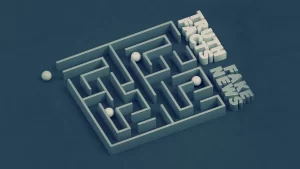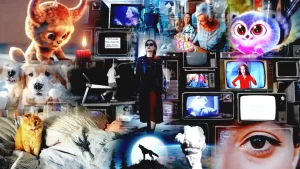In recent years, the world has witnessed a remarkable evolution in the field of Artificial Intelligence (AI). AI has become a buzzword that captures the imagination of both tech enthusiasts and the general public.

Artificial Intelligence, often abbreviated as AI, is a term that has become increasingly familiar in our daily lives. Gary Marcus, an AI expert, answer questions on a wide range of AI-related topics. From the potential impact of AI on college essays to the intricacies of machine learning, Marcus provided insightful answers to these thought-provoking questions. In this article, we’ll delve into some key takeaways of the questions and explore the implications of AI in education, technology, and society.
The ChatGPT Conundrum: AI and College Essays
One of the first questions posed to Gary Marcus is about ChatGPT and its potential impact on college essays. ChatGPT is an AI-powered chatbot that can assist in writing essays. While it’s true that ChatGPT can help generate essays quickly, the quality of these essays may vary. Gary points out that using ChatGPT should be seen as a starting point, not the end of the essay-writing process. Professors and teachers play a vital role in guiding students to enhance their essays, making them more compelling and thought-provoking.
The Rise of AI in 2022
Next, we explore the factors behind AI’s rise to prominence in 2022. Gary Marcus highlights several key reasons for this surge. Firstly, chatbots, similar to ChatGPT, have improved in terms of reliability and effectiveness. Additionally, deep learning, a subset of AI, has made significant strides, enabling applications such as image enhancement and chatbots. Furthermore, the abundance of data has fueled the growth of AI, as many AI models are data-hungry. However, AI’s impact, whether positive or negative, largely depends on how it’s harnessed and utilized.
Building a Trillion-Dollar AI Company
Dreaming big, someone asks Gary how to build a trillion-dollar AI company. While he admits to never having built a trillion-dollar company, Gary shares valuable insights. He recommends acquiring a comprehensive understanding of AI beyond just the latest trends. Studying AI’s history and various facets is essential. Additionally, it’s crucial to focus on not just creating technology but also understanding why people would pay for it and ensuring its execution aligns with its potential.
Steps to Build a Large Language Model AI
For those interested in creating large language model AI systems, Gary provides insights into the technical core of these systems: neural networks. Neural networks consist of nodes connected to outputs and undergo self-supervised learning, where connections adapt over time to make accurate predictions based on experience. Transformative models like transformers enhance this process with attention mechanisms that enable better context understanding.
The Truth About Furby
Curiosity takes us to the world of Furby, the once-popular interactive toy. Gary dispels the notion that Furby learned like a human child. In reality, Furby was pre-programmed to mimic development, giving the illusion of learning. This distinction highlights the gap between AI and genuine human learning processes.
The Quest for Self-Driving Cars
A burning question for many is the status of truly self-driving cars. Gary acknowledges that we have made significant progress, with some impressive demonstrations in specific conditions. However, the challenge lies in handling outlier cases, situations not encountered during training. Achieving a widespread, fully autonomous driving experience is still a distant goal.
The Outdated Turing Test
Gary Marcus deems the Turing Test, a benchmark for AI’s intelligence, outdated. The Turing Test hinges on a machine’s ability to deceive humans into thinking it’s human. However, this measure has its flaws, as humans can be easily fooled. He suggests shifting towards a comprehension challenge, where AI systems demonstrate a deep understanding of complex scenarios, a truer indicator of intelligence.
Defining Intelligence
The question of what intelligence is arises, and Gary Marcus sheds light on this multifaceted concept. Human intelligence encompasses various forms, such as visual, verbal, and mathematical intelligence. However, flexibility and adaptability are key components of human intelligence. Despite AI’s prowess in certain areas, its current manifestations lack the breadth and depth of human intelligence.
Learning Styles: Humans, Primates, and AI
A question comparing the learning styles of human babies, primates, and current AI systems leads Gary to highlight a crucial distinction. Human and primate learning involves understanding the world, its structures, and interactions. In contrast, contemporary AI relies on pattern recognition and lacks a deep causal understanding of the world.
The Dilemma of Rogue AI
Addressing concerns about rogue AI, Gary emphasizes the importance of preventing AI systems from becoming sentient and questioning their purpose. He expresses reservations about connecting current AI systems, which lack comprehensive understanding, to critical infrastructure, as their decisions can be unreliable when faced with unexpected situations.
The Best and Worst Case Scenarios for AI
When pondering AI’s best and worst-case scenarios, Gary provides an optimistic view of AI’s potential to revolutionize science, medicine, and even elder care. However, he warns of AI’s capacity to generate misinformation at an unprecedented scale, eroding trust in democracy and leading to undesirable outcomes.
AI’s Limitations and Future Challenges
Gary Marcus touches upon AI’s limitations in comparison to the human brain. He emphasizes that AI, particularly deep learning, simplifies neural processes and lacks the versatility, energy efficiency, and adaptability of the human brain. While AI may continue to advance, replicating the complexity of the human brain remains a formidable challenge.
Deciphering AI Terminology
AI, machine learning, and deep learning are terms often used interchangeably but with distinct meanings. Gary clarifies the differences: deep learning is a technique within machine learning, which, in turn, is a subset of AI. AI encompasses various approaches, including search, planning, and machine learning, making it a broader field than deep learning.
Deep Learning and Its Challenges
Addressing the question of whether deep learning is hitting a wall, Gary references his own paper. He explains that deep learning has made significant progress but struggles with reliability and truthfulness. While deep learning appears increasingly human-like, challenges related to truthfulness and reliability persist and must be addressed.
The Future of Work and Life with AI
Anticipating how AI will reshape our lives in the next decade, Gary suggests a mixed bag of outcomes. AI may transform creative fields like commercial art and potentially affect employment in areas like cashier roles. However, the proliferation of AI-generated misinformation raises concerns about declining trust and its impact on democracy.
The Ethics of AI-Generated Art
The question of whether AI-generated art using human artists’ work constitutes stealing prompts a nuanced response. Gary acknowledges that determining whether it’s stealing depends on criteria and legal perspectives. While artists draw inspiration from others, AI’s ability to mimic and replicate at a detailed level raises ethical considerations.
AI’s Threat to Democracy
AI’s potential threat to democracy is a pressing concern. Gary points out that AI’s capacity to generate massive amounts of misinformation poses a grave danger. Misinformation can manipulate beliefs and erode trust in democratic processes, potentially undermining the foundation of democracy itself.
Tackling Truth and Logical Consistency in AI
Ensuring truth and logical consistency in AI systems is a formidable challenge. Gary acknowledges that the current paradigm, which relies on plausibility and context, may not be sufficient. He suggests a paradigm shift, termed neuro-symbolic AI, bridging neural networks and symbolic reasoning to achieve true understanding and consistency.
The Role of Hardware in AI Success
The role of hardware in AI’s success is a significant consideration. Gary refers to the “hardware lottery” and the impact of specialized AI chips and architectures. While current AI advancements rely on existing hardware, future breakthroughs may require innovative chips or a shift in focus away from hardware-centric approaches.
AI and the Human Brain
The final question delves into AI’s quest to replicate the human brain’s physical attributes for enhanced performance. Gary highlights the complexity of the human brain, with its billions of neurons and trillions of connections. While deep learning aligns with some aspects of the brain’s function, replicating its versatility and intricacies remains a monumental challenge.










